Seizure - First Aid
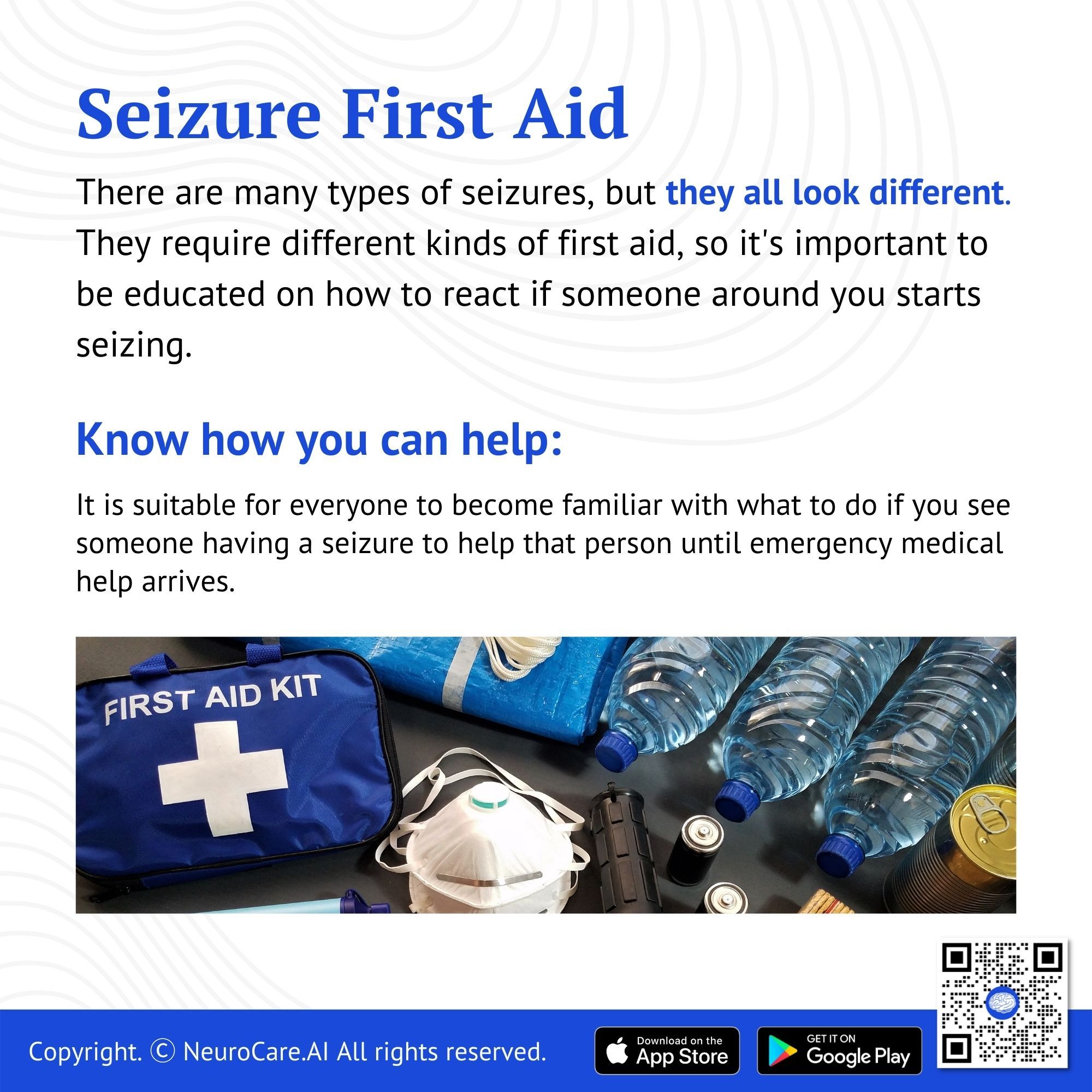
Introduction
Seizures have the potential to create injury, further illness, and possible death due to suffocation. First aid is extremely important to prevent death and injury to seizing patients. In this article, we review different steps to provide first aid to a seizing person. More than 1 out of 10 people will develop a seizure. It is not uncommon for people to experience seizures, and they need assistance, so they might need to call for help after a seizure.
Know how you can help
It is suitable for everyone to become familiar with what to do if you see someone having a seizure to help that person until emergency medical help arrives.
As soon as you know what happened. Next, you need to take steps to protect the person from further secondary events or injury due to seizures.
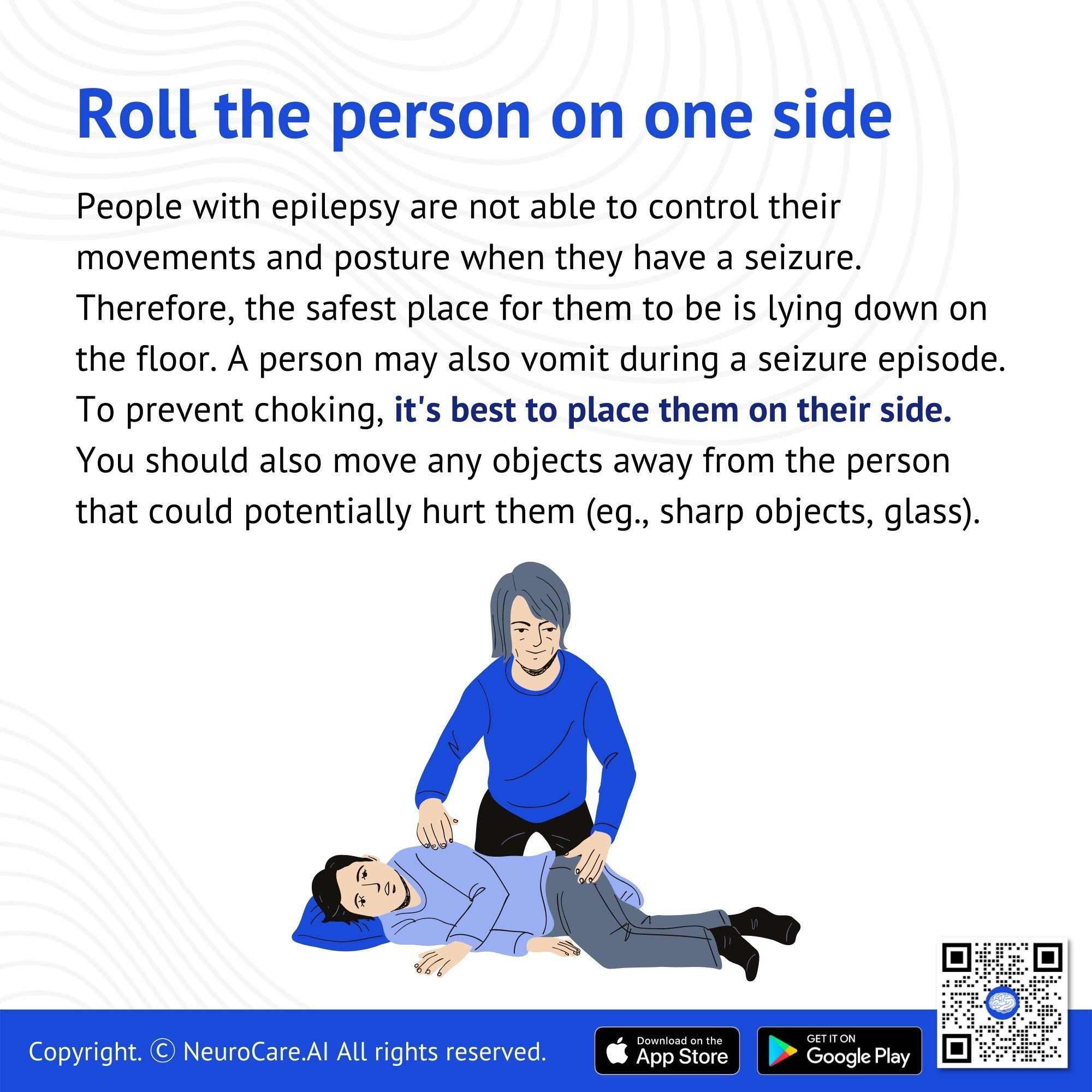
1. Roll the person on one side
People with epilepsy cannot control their movements and posture when they have a seizure. Therefore, the safest place for them is lying down on the floor. A person may also vomit during a seizure episode. To prevent choking, it's best to place them on their side. Putting the person on one side will also keep the airway clear and facilitate the patient’s breathing.
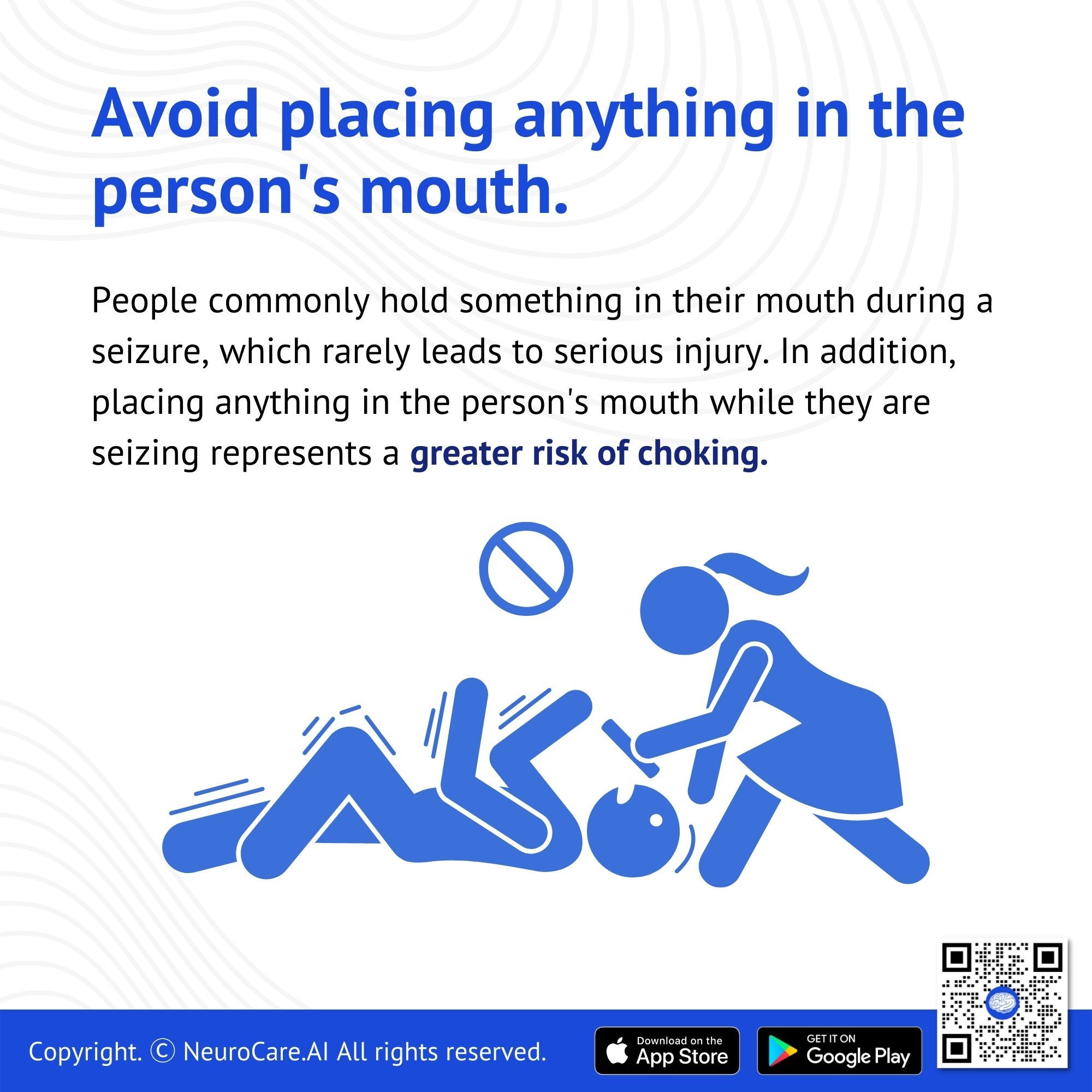
2. Avoid placing anything in the person's mouth.
People commonly hold something in their mouth during a seizure, which rarely leads to serious injury. In addition, placing anything in the person's mouth while they are seizing represents a greater risk of choking.
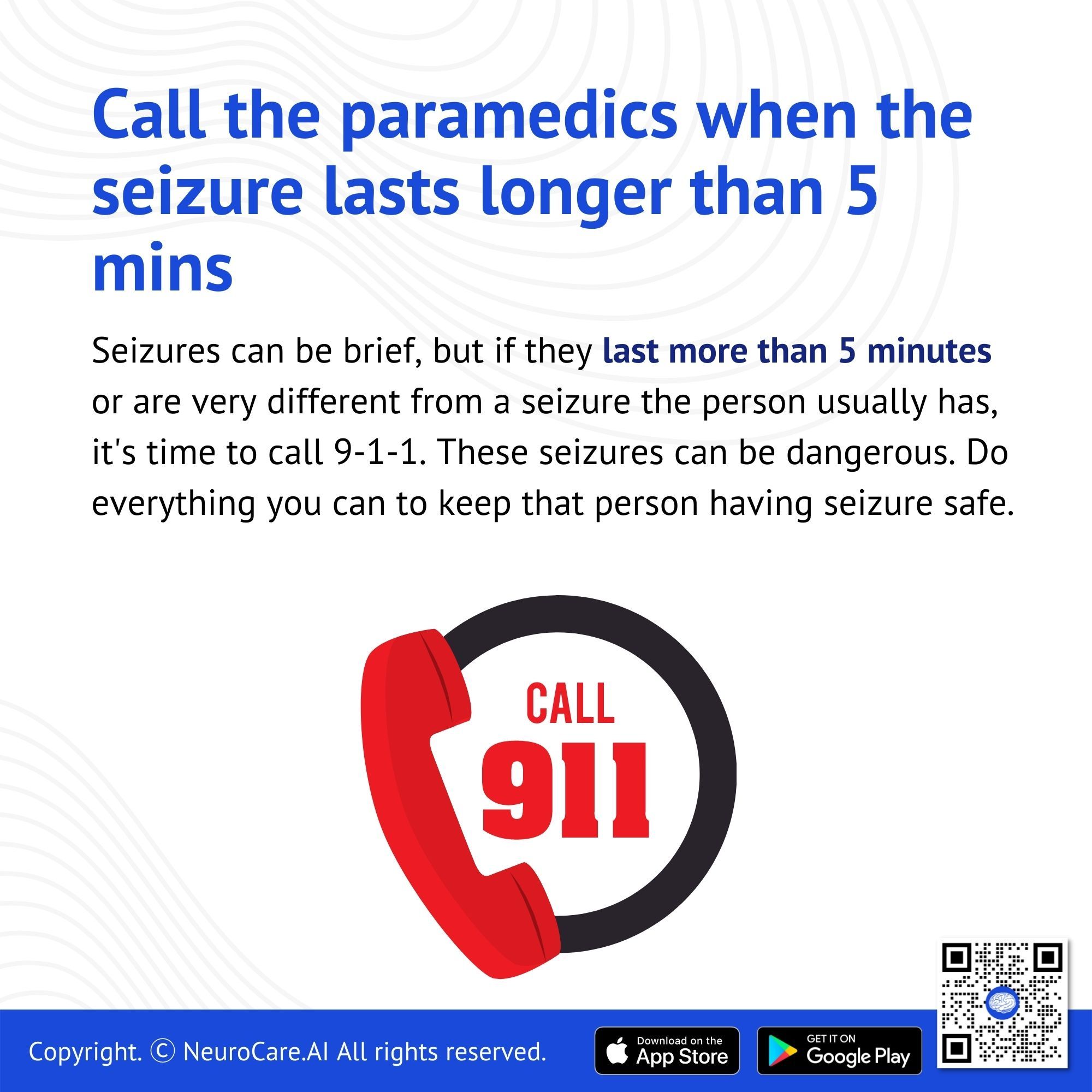
3. Call the paramedics when the seizure lasts longer than 5 mins.
Seizures can be brief, but if they last more than 5 minutes or are very different from a seizure the person usually has, it's time to call 9-1-1. These seizures can be dangerous. Do everything you can to keep that person having a seizure safe.
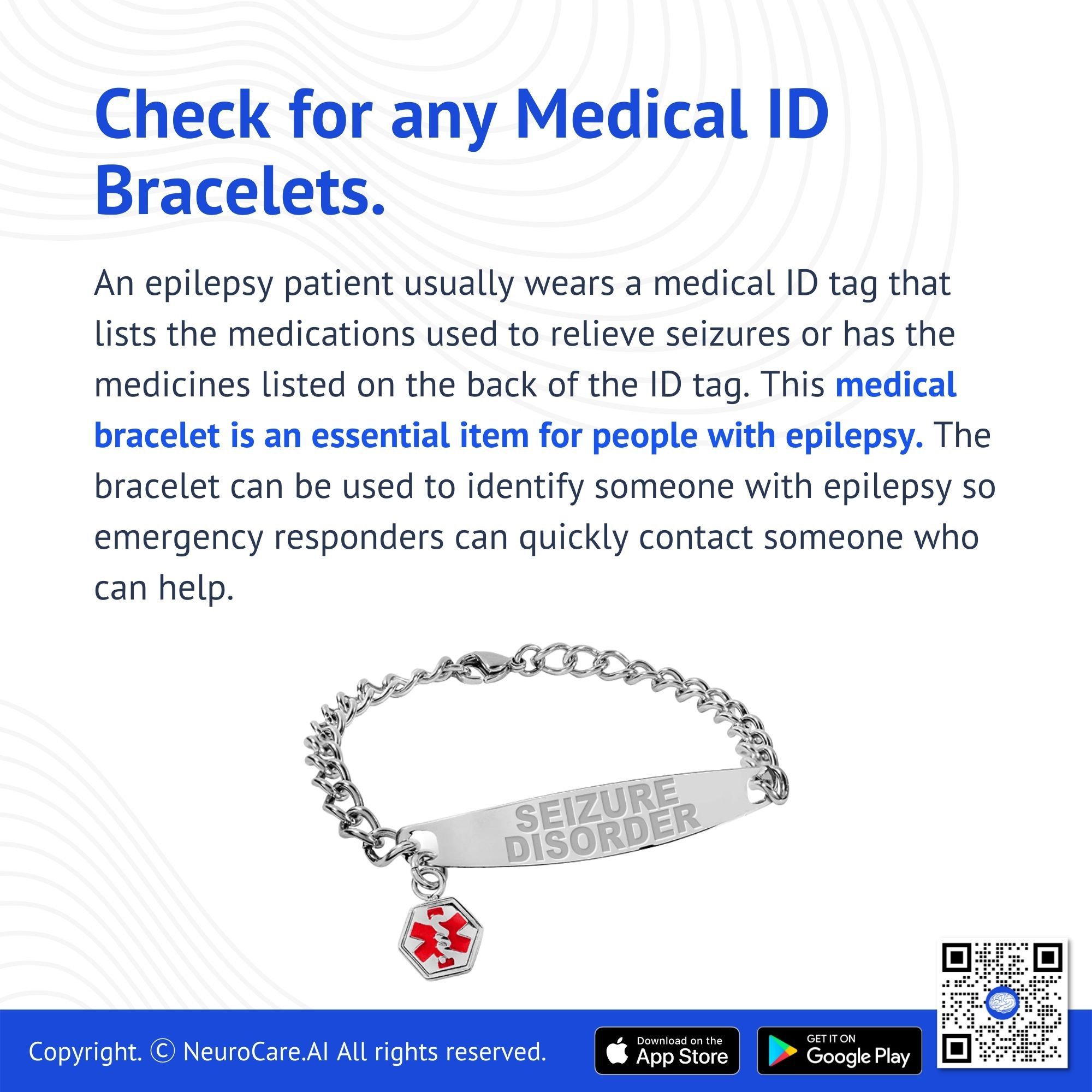
4. Check for any Medical ID Bracelets.
An epilepsy patient usually wears a medical ID tag that lists the medications used to relieve seizures or has the medicines listed on the back of the ID tag. This medical bracelet is an essential item for people with epilepsy. The bracelet can be used to identify someone with epilepsy so emergency responders can quickly contact someone who can help. A number of seizure alert devices are available now, such as traditional metal bracelets, silicone bracelets, belts, and pillboxes.
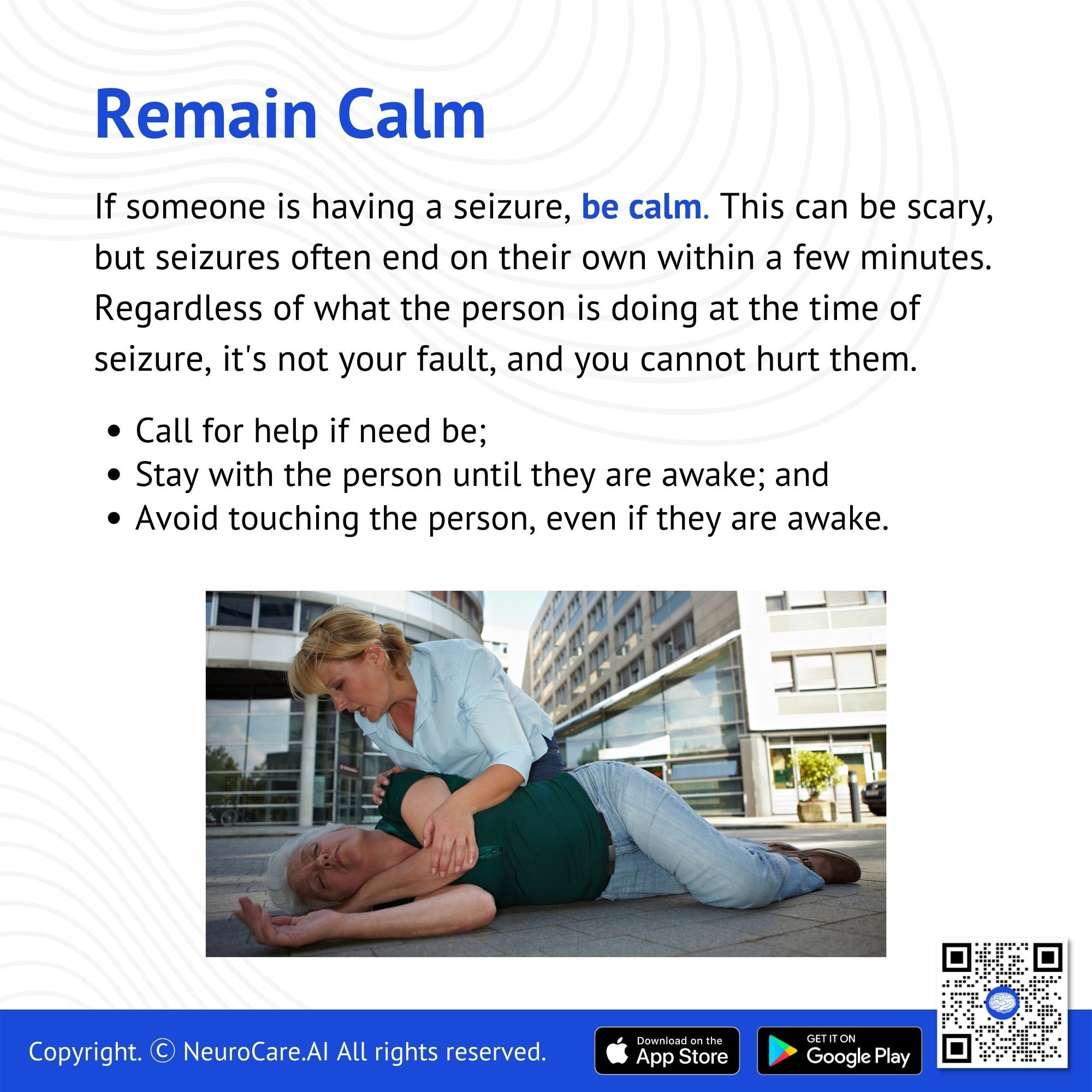
5. Remain Calm.
If someone is having a seizure, be calm. This can be scary, but seizures often end on their own within a few minutes. Regardless of what the person is doing at the time of the seizure, it's not your fault, and you cannot hurt them. Call for help if need be; then stay with the person until they are awake. And avoid touching the person, even if they are awake.
Stay by the person until the seizure ends and help him or her to sit in a safe place once he or she is alert. Tell him or her what happened in simple terms.
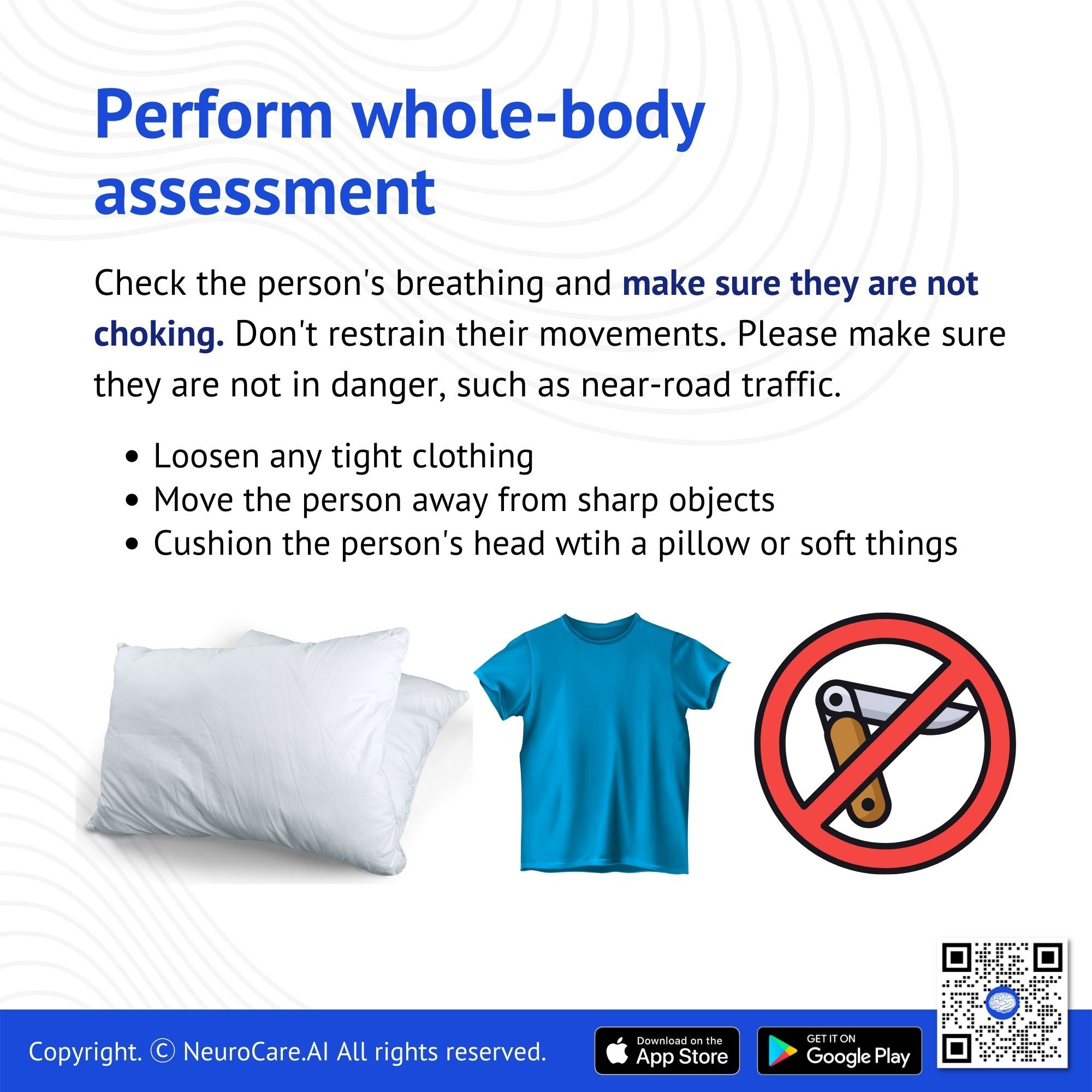
6. Perform whole-body assessment.
Check the person's breathing and make sure they are not choking. Don't restrain their movements. Please make sure they are not in danger, such as near-road traffic. One of the reasons people should be able to identify epilepsy is the risk of death that could occur if a grand mal seizure lasts for more than five minutes.
- Clear the area around the person of anything hard or sharp. This can prevent injury.
- Put something soft and flat, like a folded jacket, under his or her head.
- Remove eyeglasses.
- Loosen ties or anything around the neck that may make it hard to breathe.
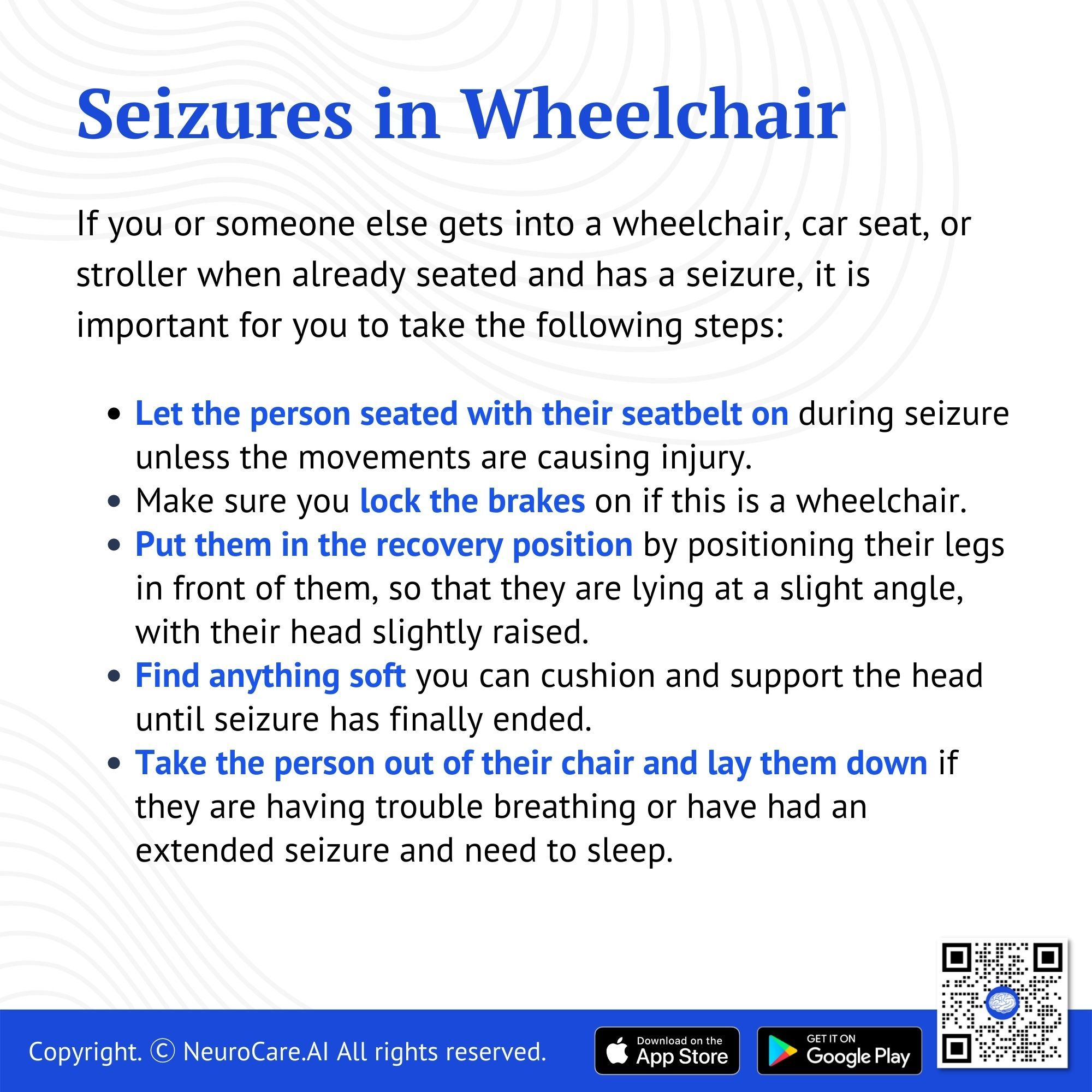
Seizure in a Wheelchair
If you or someone else gets into a wheelchair, car seat, or stroller when already seated and has a seizure, it is important for you to take the following steps:
- Let the person seated with their seatbelt on during seizure unless the movements are causing injury.
- Make sure you lock the brakes on if this is a wheelchair.
- Put them in the recovery position by positioning their legs in front of them, so that they are lying at a slight angle, with their head slightly raised. This helps to keep any fluids or foods in their mouth while making it easier to vomit.
- Find anything soft you can cushion and support the head until the seizure has finally ended.
- Take the person out of their chair and lay them down if they are having trouble breathing or have had an extended seizure and need to sleep.
- If they are still having difficulties, call 911 and closely monitor the patient while you get ready to do CPR if they ever stop breathing.
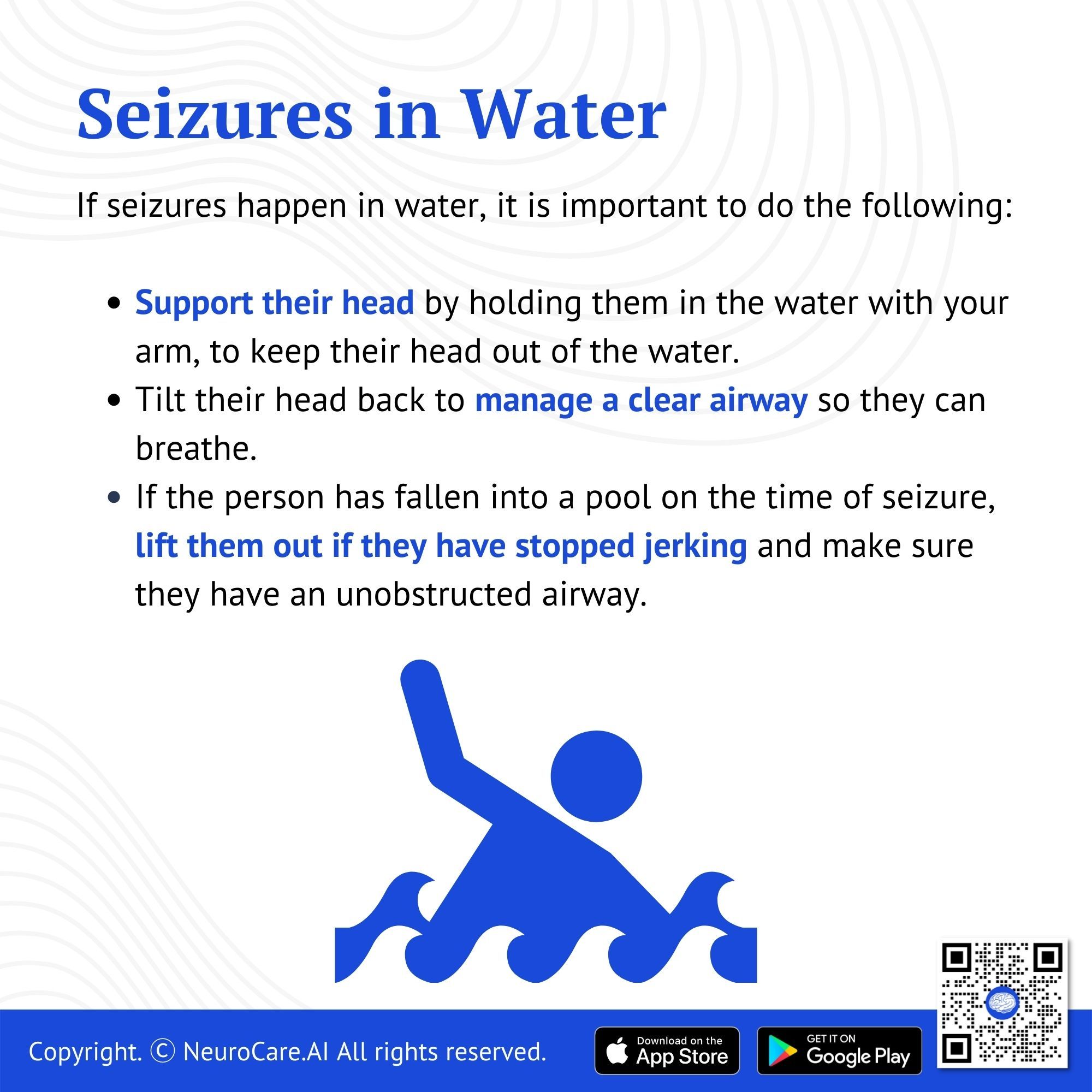
Seizures in Water
If a seizure occurs in water:
- Support their head by holding them in the water with your arm, to keep their head out of the water.
- Tilt their head back to manage a clear airway so they can breathe.
- If the person has fallen into a pool at the time of the seizure, lift them out if they have stopped jerking and make sure they have an unobstructed airway.
Note: If the jerking stops, seek help immediately from others. If the jerking is still happening, take the person out of the shallowest part of the pool.
- You may make use of flotation devices when removing the person from the water.
Once out of the water:
- Call 911 for immediate emergency help. Do this as you closely monitor the state of the person.
- Roll the person on the side.
- If the person is not breathing normally, check to see if he or she is still breathing. If you feel no breathing or only a faint heartbeat, start CPR. Call 911 and stand by.
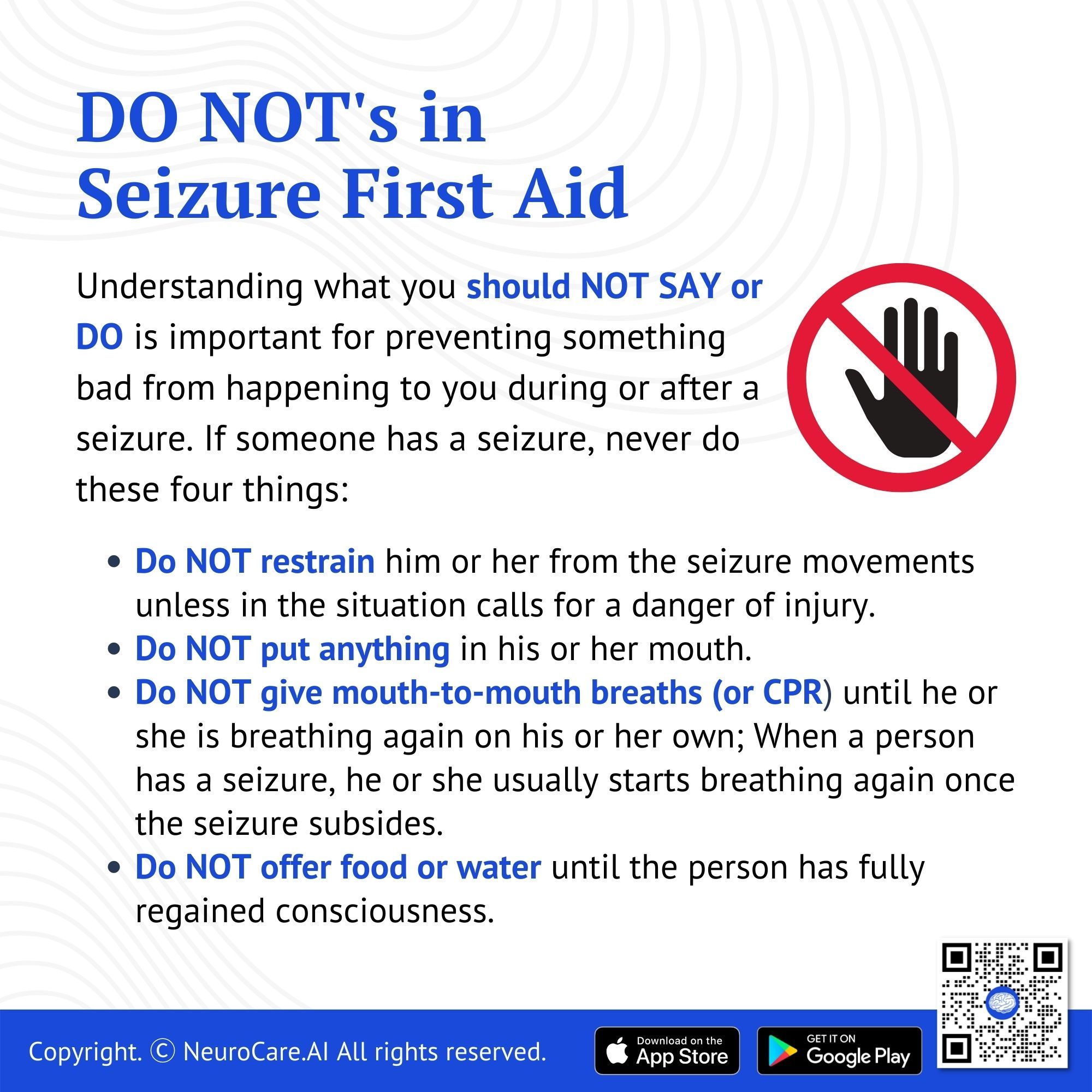
Do Not’s in First Seizure:
Understanding what you should NOT SAY or DO is important for preventing something bad from happening to you during or after a seizure.
If someone has a seizure, NEVER DO THESE FOUR THINGS:
- Do NOT restrain him or her from the seizure movements unless in the situation calls for danger of injury.
- Do NOT put anything in his or her mouth.
- Do NOT give mouth-to-mouth breaths (or CPR) until he or she is breathing again on his or her own; When a person has a seizure, he or she usually starts breathing again once the seizure subsides.
- Do NOT offer food or water until the person has fully regained consciousness.
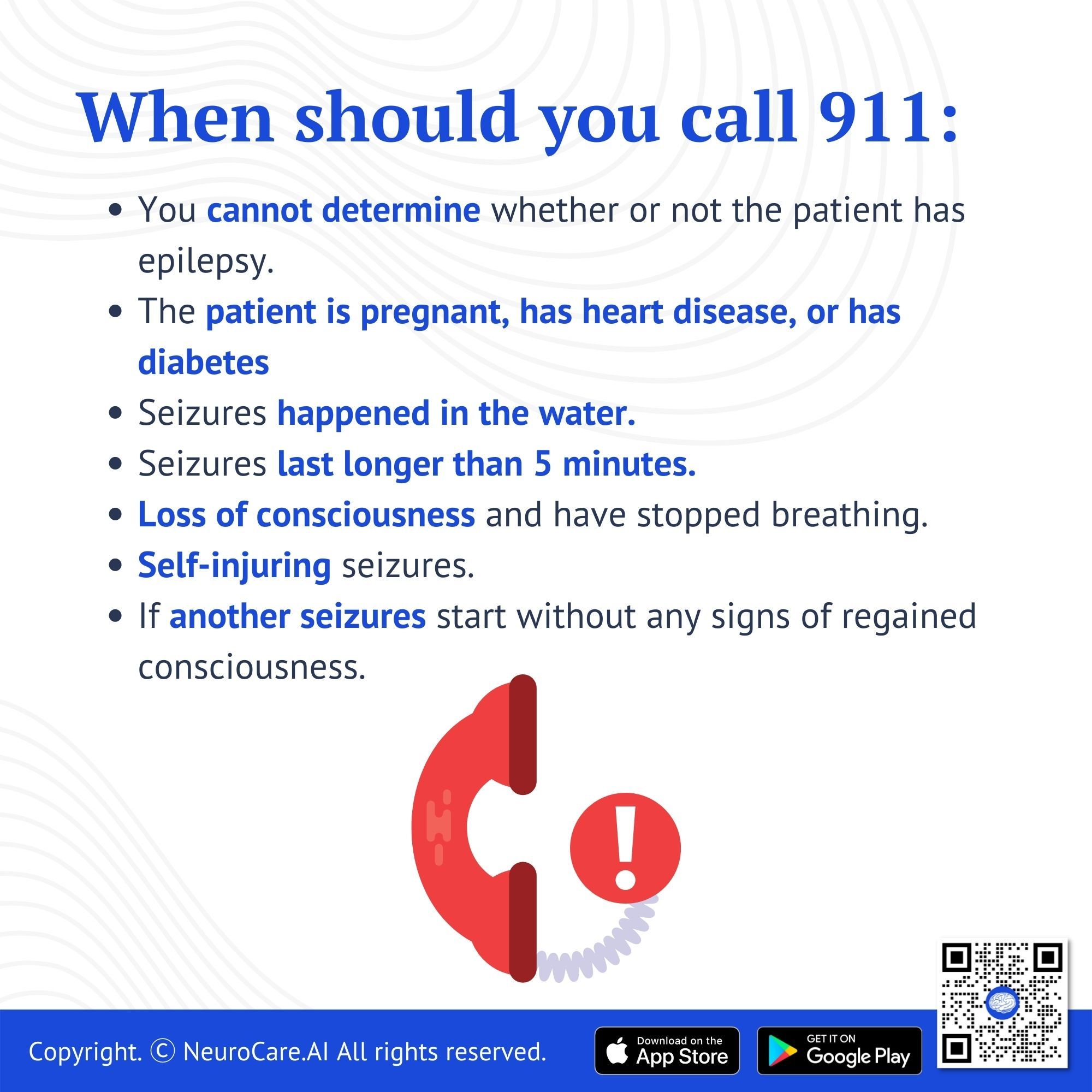
When should you call 911:
- You cannot determine whether or not the patient has epilepsy.
- The patient is pregnant, has heart disease, or has diabetes.
- Seizures happened in the water.
- Seizures last longer than 5 minutes.
- A second seizure quickly follows
- Loss of consciousness and have stopped breathing.
- Self-injuring seizures.
- Another seizures start without any signs of regained consciousness
Conclusion
Seizures are frightening events for you and the person who has them. Those who experience them may be embarrassed and confused about what happened and may be afraid that future seizures might occur. By knowing what to do and recognizing what a seizure looks like, you can help your friend or family member understand that he or she is not alone in this condition. With your help and support, a person with epilepsy can live a healthy, normal life.
DISCLAIMER:
The information in this document is for general educational purposes only. It is not intended to substitute for personalized medical professional advice. NeuroCare.AI makes every effort to provide accurate and timely information, but makes no guarantee in this regard and disclaims responsibility for adverse consequences resulting from its use. For further information, consult a physician and the organization referred to herein.
